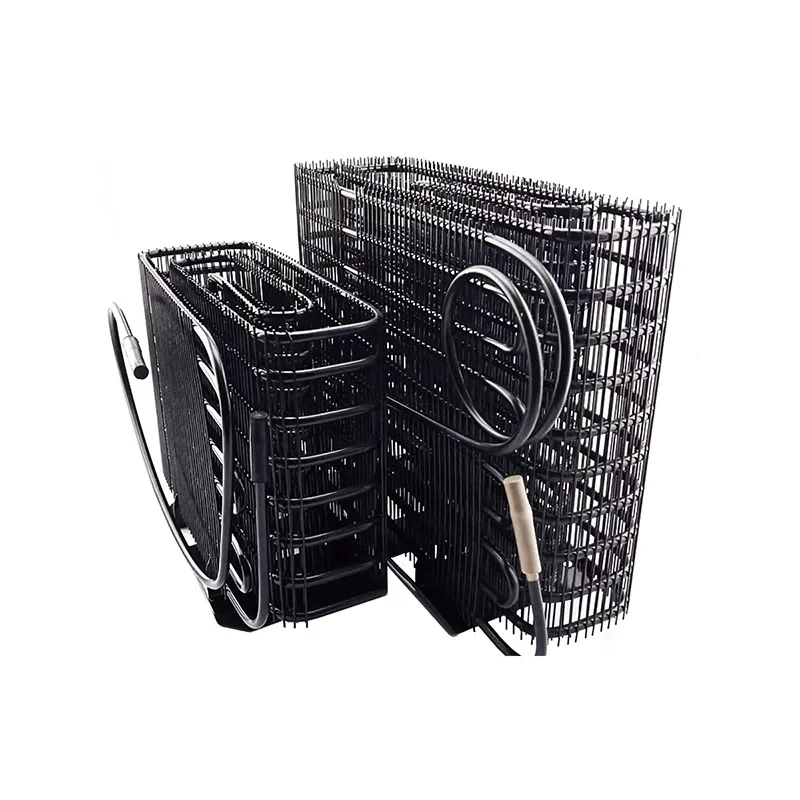- This topic is empty.
-
AuthorPosts
-
2024-03-11 at 1:41 pm #1623
Wire-tube condensers are a common heat exchange equipment and are widely used in air conditioning, refrigeration equipment, refrigeration equipment and other fields. Its thermal conductivity properties play an important role in the performance and efficiency of the device. This article will discuss the basic principles of heat conduction, the structure and working principle of wire-tube condensers, factors affecting heat conduction characteristics, and methods to improve the heat conduction characteristics of wire-tube condensers.

First, let's understand the basic principles of heat conduction. Thermal conduction refers to the process of transferring heat from a high-temperature area to a low-temperature area. In wire-tube condensers, heat is transferred from the refrigerant to the cooling medium by conduction through the walls of the wire tube. The rate of heat transfer depends on the thermal conductivity of the material, the heat transfer area and the temperature difference.
Wire-tube condensers usually consist of two layers of pipes, the inner pipe is used to transfer refrigerant, and the outer pipe is used to transfer cooling medium. The refrigerant flows in the inner pipe and transfers heat to the cooling medium through contact with the wall of the outer pipe. The structure and working principle of wire-tube condensers determine their heat conduction characteristics.
The thermal conductivity characteristics of wire-tube condensers are affected by many factors. The first is the thermal conductivity of the material. Thermal conductivity is the ability of a material to conduct heat, and different materials have different thermal conductivities. Commonly used materials for wire-tube condensers include copper, aluminum, stainless steel, etc. Among them, copper has a high thermal conductivity and is suitable for use in efficient wire-tube condensers.
The second is the heat transfer area. The larger the heat transfer area, the larger the area for heat transfer, and the faster the heat conduction rate. The heat transfer area of wire-tube condensers depends on factors such as the length, diameter and arrangement of the wire tube. Typically, wire-tube condensers are arranged in a spiral or parallel arrangement to increase the heat transfer area.
Temperature difference is also an important factor affecting heat transfer characteristics. The greater the temperature difference, the faster the heat transfer rate. In wire-tube condensers, the temperature of the refrigerant is higher and the temperature of the cooling medium is lower. The greater the temperature difference between the two, the faster the heat transfer rate.
In order to improve the heat conduction characteristics of wire-tube condensers, some measures can be taken. The first is to choose a material with higher thermal conductivity, such as copper. The second is to increase the heat transfer area, which can be achieved by increasing the length and diameter of the line pipe or using multiple pipes in parallel. In addition, the thermal conductivity rate can be increased by increasing the temperature difference, but care should be taken not to exceed the tolerance of the material.
In summary, the heat conduction characteristics of wire-tube condensers play an important impact on the performance and efficiency of the equipment. The rate of heat transfer depends on the thermal conductivity of the material, the heat transfer area and the temperature difference. Selecting appropriate materials, increasing heat transfer area and controlling temperature differences are the keys to improving the heat transfer characteristics of wire-tube condensers. By optimizing the design and process of wire-tube condensers, their heat conduction efficiency can be improved, thereby improving the performance and efficiency of the equipment.
How to choose a refrigeration wire tube condenser?
Advantages and application fields of wire-tube condenser
Manufacturing process and material selection of wire-tube condenser
Wire-tube condenser troubleshooting and repair methods
How to improve the performance and efficiency of wire-tube condenser?
As a professional wire-tube condenser supplier: What are our advantages?
Wire-tube condenser: Make your refrigeration system more energy-saving and environmentally friendly
Deciphering the wire-tube condenser: the secrets of its structure and components
Wire-tube condenser is an environmentally friendly tool in refrigeration equipment
Customized wire-tube condenser, the future trend of efficient refrigeration
Optimized design: key steps to create an efficient wire-tube condenser
Wire-tube condenser safety and reliability analysis: influencing factors and improvement strategies
The development history of wire-tube condenser
An in-depth discussion on the heat exchange efficiency of wire-tube condenser
wire-tube condenser installation and debugging guide
Corrosion resistance, selection and application of wire-tube condenser materials
Impact and application analysis of wire-tube condenser on energy efficiency
How to clean and maintain wire-tube condenser?
How to choose refrigerant for wire-tube condenser
Analysis of the role and importance of wire-tube condensers in refrigeration system
Heat dissipation performance analysis and optimization strategies of wire-tube condensers
The role of wire-tube condensers in air conditioning systems
-
AuthorPosts
- You must be logged in to reply to this topic.

